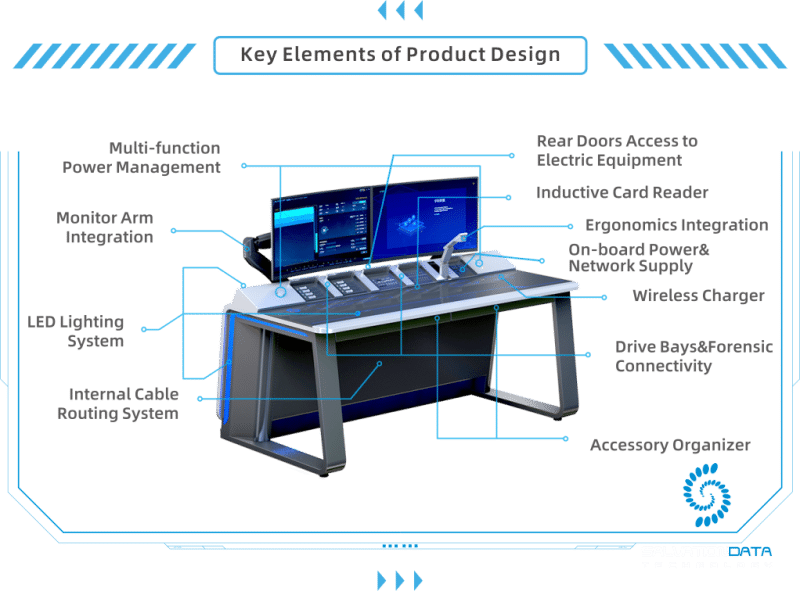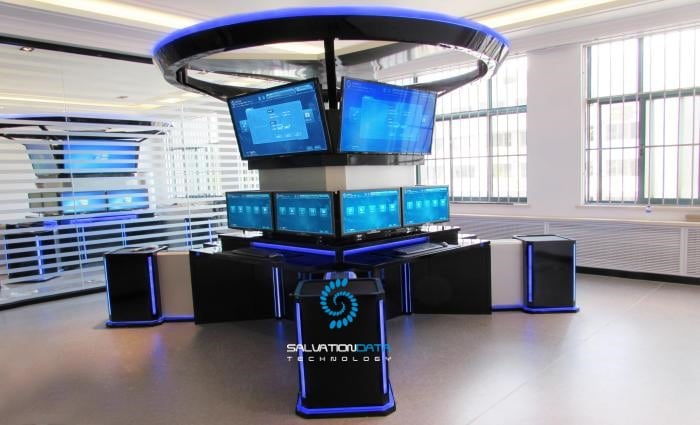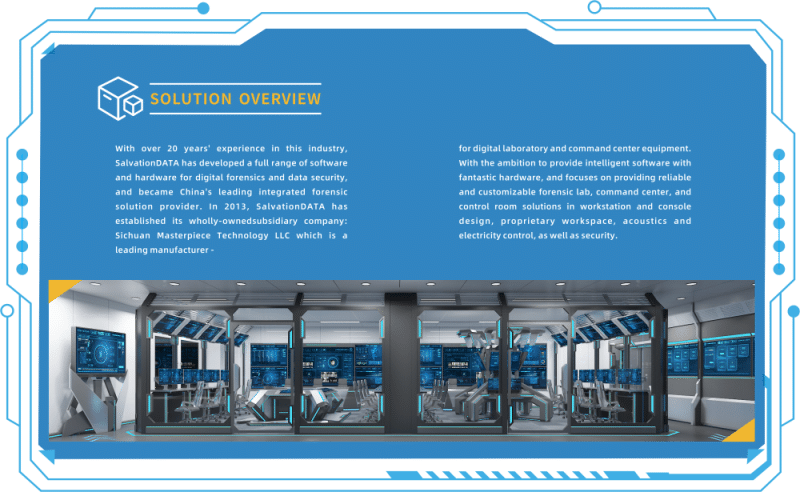A forensic lab is an important part of current crime probes and attempts to keep computers safe. These labs have the forensic tools to look at digital proof and find important data that can help with court procedures or security measures. A forensic lab is important because it can carefully handle, look at, and understand data, making sure that the results are accurate and trustworthy.This article will show you how to set up a digital forensic lab by going over the most important parts and the best ways to do things. If you want to make a good forensic lab, whether you’re starting from scratch or improving an existing one, you should know the important parts and stick to tried-and-true methods. We’ll talk about the basic infrastructure, specialized sections, important tools, and rules and guidelines that your lab needs to keep running smoothly.
Setting Up a Forensic Lab: Key Components and Best Practices

-
Content
- Essential Components of a Forensic Lab
- Best Practices for Setting Up a Forensic Lab
- Implementation of Digital Forensics Process
- Challenges and Solutions in Setting Up a Forensic Lab
- Conclusion
-
Content
- Essential Components of a Forensic Lab
- Best Practices for Setting Up a Forensic Lab
- Implementation of Digital Forensics Process
- Challenges and Solutions in Setting Up a Forensic Lab
- Conclusion
Essential Components of a Forensic Lab
1. Basic Infrastructure
A well-structured forensic lab begins with a solid basic infrastructure. This includes:
- Case Acceptance Area: This is the place where cases are registered and accepted for the first time. Here is where the proper paperwork and dealing procedures begin, making sure that the chain of custody is kept from the start.
- IT Infrastructure Setup: Any digital forensic lab needs a strong IT system to work. This includes fast computers, safe networks, and dependable ways to store data. The system must be able to handle handling and analysing large amounts of data quickly and safely.
- Evidence Storage Solutions: Safe ways to store proof are very important for keeping its purity. In this case, both real and digital stores are used for gear and data. Putting in place secure entry controls and natural protections will keep proof safe and undamaged.
2. Specialized Divisions
To address the diverse nature of digital investigations, a forensic lab typically includes several specialized divisions:
- Computer Forensics Division: This division focuses on the analysis of data from computers and digital storage devices. Techniques include disk imaging, file recovery, and data carving to retrieve and analyze digital evidence.
- Mobile Device Forensics Division: As mobile devices become more common, this section is an expert at getting data from smartphones and computers and analyzing Some of the methods used here are getting around security measures, extracting data, and analyzingmobile-specific artifacts.
- Video and Audio Forensics Division: This section is in charge of looking at video data. This can include making video and audio captures better, making sure media files are real, and getting useful data from these sources.
3. Forensic Tools and Software
The effectiveness of a forensic lab is greatly enhanced by the use of specialized tools and software. Here are five essential examples:
- Disk and Data Capture Tools: One tool that can be used to make perfect copies of data storage devices is FTK Imager. This tool makes sure that data is recorded correctly and can be studied without changing the original proof.
- File Analysis Tools: When you want to look at the files on a disc picture, Autopsy is a great tool for you. It helps detectives look for files, get back data that was deleted, and look at file information.
- Mobile Forensic Tools: Oxygen Forensic Detective is a complete programme for getting data off of mobile devices and analyzing It works with many devices and can get to your contacts, texts, call logs, and app info.
- Memory Forensics Tools: You can use Rekall to look at volatile memory (RAM). This tool helps detectives figure out what programmes were running on a computer at any given time. It can be very helpful in finding malware or other illegal activities.
- Video Forensic Tools: The SalvationDATAVIP 2.0 programme is made to look at video proof. It has tools for improving video quality, looking at video information, and verifying video files to make sure they are real. Contact to get a Free Trial now!
- Forensic Data Recovery: To make sure that important data doesn’t get lost forever, you need tools like EnCase and R-Studio to recover lost or deleted data. As an important part of the forensic investigation process, this lets digital evidence be fully analysed and retrieved.
By having these important parts and tools, a forensic lab can work well and keep the accuracy and dependability of digital forensic investigations at a high level.
Best Practices for Setting Up a Forensic Lab
1. Following International Standards
Forensic labs must follow foreign standards to keep their quality and competence high. Standards like ISO/IEC 17025 make sure that labs follow the same steps and get correct results every time. In digital forensics, this standardisation is important to make sure that evidence is treated and analysed properly so that it stays true for court processes. Standardisation also makes it easier for forensics labs from different countries to work together and share data, so everyone follows the same rules and methods.
2. Developing Clear Procedures
For a digital forensic lab to run smoothly, it’s important to set clear Standard Operating Procedures (SOPs). SOPs explain in detail how to do all parts of lab work, from gathering data to analysing it and writing up the results. For digital proof to stay valid, there must be clear rules about how to handle it and keep track of its chain of custody. Every step of the forensic process is recorded and can be tracked back to these steps. This keeps the process from getting tainted or contaminated. Following SOPs also makes the lab look more trustworthy and credible in legal situations.
3. Training and Certification
Police and investigative experts who work with digital forensics need to keep learning new skills and tools. Regular training events are a good way for analysts to learn about new tools and methods. Analysts who have licences from well-known groups, such as GIAC Certified Forensic Analyst (GCFA) and Certified Forensic Computer Examiner (CFCE), show that they are informed and want to advance in their work. A forensic lab can keep their skills and knowledge up to date by paying for training and licences. This is important for doing good digital forensic investigations.
By sticking to these best practices, a forensic lab can keep up high standards of work, protect digital proof, and keep its reputation in both law and safety settings.
Implementation of Digital Forensics Process
1. Core Steps in Digital Forensics
There are several important steps in the digital forensics method that make sure investigations are complete and correct. To give you an idea of the main steps, with a focus on getting the data, here they are:
- Collection: The first step is to gather digital proof in a way that doesn’t compromise its purity. This is done by making exact copies of storage devices with tools likeAutopsy, which makes sure that the original data is not changed.
- Data aquisition:After the first collection, getting data is very important. In this step, data from the different digital devices being looked into is carefully gathered. It is important to use trustworthy tools that can read a lot of different file types and forms. In this case, tools like EnCase or DD are often used because they have features that help get data in a safe and complete way. Checksums or hashes must be used to make sure that the data being collected is real and complete.
- Examination: Once the evidence is collected and data acquired, it undergoes a detailed examination. This step involves using specialized software for file analysis, to sift through data and identify relevant information.
- Analysis: During the analysis phase, forensic experts look at the data to find trends, oddities, or specific information that is important to the case. In this step, you might need to look at data from mobile devices using a mobile forensic tool.
- Reporting: The final step is compiling a comprehensive report that details the findings of the investigation. This report must be clear, precise, and supported by the evidence gathered and analyzed. It is crucial for presenting the findings in legal or organizational contexts.
2. Ensuring Accuracy and Reliability
Maintaining the integrity of digital evidence is paramount in digital forensics. Here are some techniques to ensure accuracy and reliability:
- Techniques to Maintain Integrity: Use write blockers during data acquisition to prevent any changes to the original data. Implementing secure evidence storage solutions and strict access controls also helps in preserving the integrity of the evidence.
- Avoiding Common Pitfalls: Avoiding pitfalls such as improper handling of evidence, failure to document procedures, and using outdated tools is crucial. Regular updates and training ensure that analysts are well-versed in the latest techniques and tools, such as VIP 2.0 from SalvationDATA, a video forensic tool used for analyzing video evidence.
- By meticulously following these steps and ensuring the integrity of the process, aforensic lab can conduct reliable and accurate digital forensic investigations, contributing to the resolution of complex cases.
Challenges and Solutions in Setting Up a Forensic Lab
1. Dealing with Large Volumes of Data
Dealing with and handling big files is one of the hardest parts of setting up a forensic lab. Here are 2 methods that work:
- Strategies for Managing and Processing Large Datasets: Setting up effective ways to deal with data and using powerful computer tools are very important. Large amounts of data can be handled by tools like Rekall, which is used to review memory.
- Importance of Scalable Storage Solutions: To keep up with the growing amount of digital proof, storage options that can be expanded are necessary. The forensic lab can handle data from multiple probes at the same time without slowing down or compromising security with solutions that can grow as needed.
2. Keeping Up with Technological Advancements
Another big problem is the speed with which technology is changing things. For digital forensics to work well, you need to keep up with the newest tools and methods.
- Continuous Update of Tools and Software: Apps and tools used for investigations need to be updated often to keep up with new technologies. For example, using the most up-to-date versions of tools from SalvationDATA like Oxygen Forensic Detective and VIP 2.0 makes sure that theforensic laboratory can still handle current digital evidence.
- Staying Informed About Emerging Threats and Vulnerabilities: It’s important to know about the newest holes and risks. By going to school and joining professional groups, forensic analysts stay up to date and ready for new tasks.
Conclusion
To sum up, a modern crime investigation and hacking attempt needs a forensic lab that is well-equipped and well-run. Digital proof is treated with the greatest care and accuracy thanks to the use of cutting edge tools and strict obedience to international standards. Every part of the lab is important to its success, from building a strong IT system to keeping scalable storage options running. A relationship with a digital forensic company can help the lab do even more by giving them access to specialized tools and knowledge that they might not have in-house. By working together, the lab can stay on the cutting edge of new technology and be ready to handle even the most difficult investigative problems.




